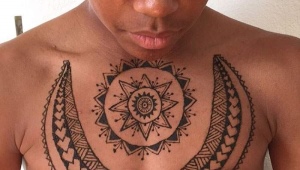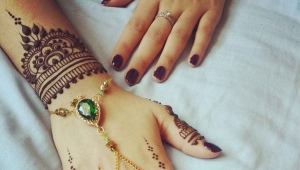Colorless henna for hair
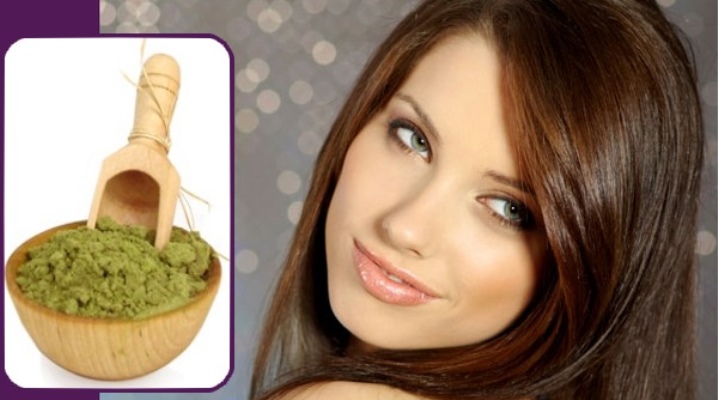
Every woman, without exception, wants to have beautiful and well-groomed hair. Since ancient times, shiny, long and thick strands testified to the health of their owner and were one of the most valuable attributes of true female beauty.
Living in a modern metropolis, we constantly expose our hair to harmful environmental factors. Dust and dry air, ultraviolet radiation, car exhaust fumes have a bad effect on their health. In addition, they often lack proper nutrition, care and care. Because of all this, over time, the curls become brittle and dull, they can begin to split and fall out, irritation and dandruff appear.
Colorless henna can cope with all these problems. This cosmetic product is made from the leaves and stems of cassia tupolista, and it has truly miraculous properties.

What is it for?
Habitual to all henna, which dyes hair in a copper-red color, is made from the leaves of a plant such as lavsonia non-prickly. In addition to the pronounced coloring properties used for hair and mehendi body painting, this powder has long been used in medicine as a disinfectant and regenerating agent. From it make masks for nails and skin.
Colorless henna is not very similar to regular henna, despite the similarity in name. The powder of these plants looks almost the same, but acts differently. The product obtained from cassia does not stain, but it has a powerful positive effect on the skin and hair. The plant is rich in rare and extremely useful substances, thanks to which it has been used since time immemorial. And now it is popular when used as masks for the face, hands and body, and especially for hair. It serves to strengthen, restore and nourish the hairs and scalp, copes with such problems as excessive oiliness, dandruff and damage to the structure of curls.
Colorless henna owes all its useful properties to its unique composition.
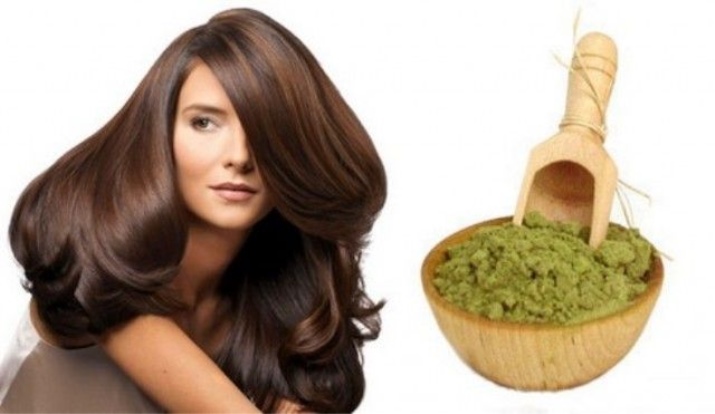

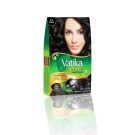


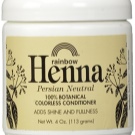
Compound
It is amazing that a plant growing in the desert under harsh conditions of lack of water and nutrients can have such a rich and valuable composition. The beneficial ingredients in cassia include the following:
-
Chrysophanol - a natural antiseptic that fights fungi and microbes. Due to its anti-inflammatory effect and effect on harmful microorganisms, it works excellently in the treatment of seborrhea, as well as dandruff as its external manifestation. In addition, it helps to cleanse the pus and heals the wounds of the epidermis. Due to its color, it may have a slight coloring effect.
-
Emodin responsible for giving a natural vibrant shine to the curls, after a sufficient time of exposure, the effect of it is similar to the lamination of hair.
-
Aloe emodin It has an excellent effect on the process of hair growth, stimulates the growth of old and the appearance of new hairs.
-
Carotene promotes healing of problematic curls, restores the structure of the hair shaft, prevents breakage, loss, split ends.
-
Betaine is a popular component of various products for the care of dry, dyed and damaged strands. It has an amazing moisturizing effect.
-
Zeaxanthin is a powerful prevention of hair loss and a means to combat it.
-
Rutin helps to strengthen the hair follicles, which increases the life of each hair and prevents them from falling out.
-
Physalen It is also an antimycotic and eliminates one of the causes of seborrhea and skin irritations.

Cosmetic colorless henna does not contain vitamin and mineral complexes common to our familiar plants. Moreover, each available substance is useful and especially. Due to the fact that they are rare in our latitudes, they become even more valuable, because it is almost impossible to get them from some other product.
With proper application and completion of the full course of treatment with colorless henna, you can significantly improve the hairline, give it shine, strength and density.

Benefit and harm
Cassia powder is used to eliminate a huge number of problems with the hair and scalp. Here are some of its beneficial properties for curls and epidermis:
-
Strengthening hair follicles, which is an excellent remedy for hair loss.
-
Additional nutrition for thin strands and epidermis.
-
It is especially useful for oily curls, regulates the production of sebum and eliminates oiliness and rapid pollution.
-
It is also good for hair growth. The composition helps not to lose old regrown hairs and stimulates the appearance of new ones.
-
Due to the presence of chrysophanol and physalene, the powder can treat various diseases caused by fungi and bacteria. It is also used in the treatment of dandruff and seborrhea.
-
A mask of colorless henna powder is useful for the thickness of the hairline. Because of this, it is also extremely favorable for the volume of hair.
-
Henna treatment has the ability to improve the immunity of the scalp and protect against the effects of negative environmental factors, sun and wind, as well as mechanical or chemical damage.
-
The tool helps to fight against the section of the tips of the hairs and does not dry the skin.
We can say that the use of this tool makes the curls more alive and healthy, positively changes the structure of the hair shaft, moisturizing and nourishing it, gives the curls volume, strength, shine and protection from harmful influences.

However, even such a useful product has its drawbacks.
-
Due to the natural nature of the product, it practically does not cause allergic reactions. But still, individual manifestations are possible due to intolerance to the substance. If this happens and during the application of the mask you begin to feel burning and itching, the procedure should be stopped immediately. Otherwise, you can get irritation of the skin, which then will have to be treated additionally.
-
Along with the antiseptic effect, the product can dry out hairs and skin. Therefore, in case of special damage or severe dryness of the hairline, it is necessary to apply it carefully. It is desirable to combine the powder with substances for nutrition and moisturizing. If you use henna too often and do not combine with moisture, you can bring the hair to dryness and brittleness.
-
Do not use colorless henna powder on freshly dyed or bleached hair. Firstly, the components of the product can enter into a chemical reaction with the remains of the dye, and then the effect will not be predictable. Secondly, the product can have a coloring effect on bleached and depigmented hair and dye it in a yellow-green tint.


What henna is better?
When buying colorless henna, unfortunately, it is impossible to evaluate its quality. But still, having bought the product and coming home, you can check its properties. In the store, you can see where the product was produced and make an informed choice.
Indian henna, as well as those produced in Turkey and Egypt, are of good quality. Iranian natural products are also on sale, but users note that their quality has decreased recently. Perhaps this was due to the addition of other herbs to the composition.
It should be noted that if the plant was harvested at the right time, dried and crushed in a quality manner, the final cosmetic product will be of high quality regardless of where the weed is native.
But it should be noted that in India there are no European quality standards and production control, so not all components can be written on the composition of cosmetics and sometimes there are unnecessary additives.
The first thing you do when you open a bag of powder is sniff it. If the smell is herbal, noticeable and strong, the product will have good healing properties. The texture of the powder will also say a lot. If it is small and homogeneous - the production was of high quality, but if unground components can be found - the raw material, most likely, was not first-class.The powder should have a greenish-brown color, which can also be called marsh. The color is especially pronounced after the combination of dry matter with water. If there is a shade of yellowness in it, the plant was not collected on time and will not contain the maximum amount of useful substances.
If your hair has not been dyed or bleached, colorless henna produced correctly will not change its color at all. In the case of coloring, it can be concluded that the product is a fake or contains additional components.

How often can you use?
The use of colorless henna for the treatment and strengthening of hair, as in the case of any other products, should be regular, not episodic. To obtain a visible result, it is necessary to complete a full course of masks with cassia powder for several months.
For normal or oily curls, such masks can be applied 2 times a week. With a dry type of hairline, you should not repeat the procedure more than once a month.
In order to reduce the drying effect of the product, you can add a few drops of essential oil to the masks or make a mixture based on kefir.
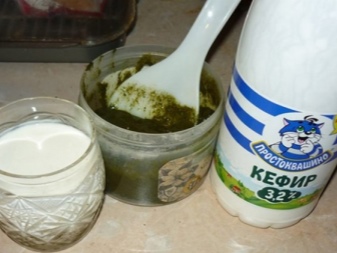

Can everyone use?
Almost all women with any natural hair color can use cassia powder. However, there are some contraindications.
You should not make masks from colorless henna powder on recently dyed or bleached curls. This can lead to a change in their hue to yellowish. For blondes, it will be quite difficult to remove this color later. Also, do not plan the clarification procedure immediately after applying the product, this can also give an unexpected effect.It is necessary to wait a few weeks after the end of the course of treatment, otherwise the paint may lie unevenly or give the wrong shade. Also, do not use the product on highlighted strands.
Using the product on light natural hair is completely safe, provided it is of high quality production. Before use, it is recommended to test on an inconspicuous strand that can be easily hidden.





It is also necessary to apply the composition to gray strands with extreme caution. Since they are devoid of pigment, the change in shade on them may be too pronounced. But some ladies actively use this property by infusing cassia powder and adding lemon, turmeric, chamomile and ordinary henna to it. In this case, light shades of gold and red colors are obtained, which help to hide the gray hairs in the hairstyle and give it a fresh and pleasant shade.
You should carefully use colorless henna for dry curls. Firstly, it should be used no more than once a month. Secondly, the powder can only be applied to the roots. Also, do not keep the composition on the hair for too long. To soften the effect, dry grass can be diluted with kefir. Its acidic environment will enhance the return of nutrients, and the fat content will remove the withering effect.
Colorless henna is great for restoring hair structure even after keratin straightening. It is still necessary to wait a while after straightening, and then you can conduct a course of masks with cassia to improve the hair.
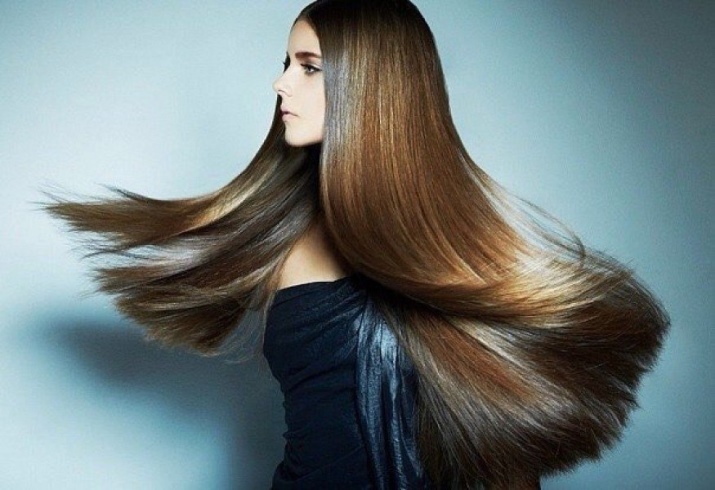
Application methods
When using cassia powder for hair, you need to know some subtleties.
Best of all, the beneficial effects of colorless henna are revealed under the influence of temperature or acid.Therefore, it is best to dilute the powder with hot water or kefir. Water is well suited for hair with high fat content, and fatty yogurt neutralizes the drying effect on dry strands. The result will also depend on the quality of the water. It is better to use filtered or boiled, and you can also use bottled mineral water.
To achieve maximum effect, the product must be applied correctly to the curls. If they are dry, the composition should be applied only to the roots so as not to injure the hairs themselves. With increased secretion of sebum, the composition can be applied to the entire length. This will help not only strengthen, but also cleanse the scalp and epidermis well. Split ends, if any, are also not covered with the composition.

It is best to apply the mixture, which has not yet cooled down, the main thing is not to burn the scalp.
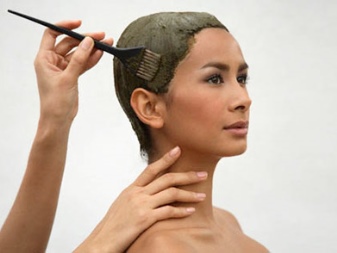

-
You need to make a mask on clean, well-combed, strands moistened with water.
-
At the beginning, the composition is abundantly distributed over the scalp and hair roots. Begin application from the back of the head, gradually dividing the hair into partings and working through the entire surface of the head.
-
If necessary, the rest of the composition is distributed along the entire length of the hair or along their main mass, avoiding the tips.
-
Gently massage the skin with your fingers.
-
Hair is collected and cleaned under polyethylene or a shower cap.
-
From above, it is advisable to wrap your head with a towel or put on a warm hat.
-
After a while, the composition is washed off with running water, you do not need to use shampoo. This should be done especially carefully, not allowing the mass to remain on the hair. After washing, you can use the usual balm.
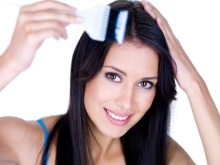


To strengthen and improve curls, you can use colorless henna without additives.But it will give a particularly good result when enriching the mixture with essential oils.
- For oily skin and fighting dandruff, lemon, pine, cedar, mint, ginger oils, as well as sage, clove, bergamot, are perfect.
- With excessive dryness, orange, tangerine, lavender oils plus chamomile, ylang-ylang and sandalwood have proven themselves well.
- Pine, cedar, mint, cypress or verbena oils will help against hair loss.
- Sandalwood, chamomile, rosewood or geranium will help to cope with the section of the strands.


With the help of colorless henna, full coloring of curls is impossible. But quite often, when used for health purposes, various substances are added to it to give the hair a pleasant shade and paint over the existing gray hair. To obtain golden tones, it is combined with lemon juice, chamomile decoction, a small addition of ordinary henna. Turmeric is used for copper strands, and combined with cocoa or coffee for chocolate strands.
After a course of hair procedures with henna powder, you can achieve the same effect that biological lamination gives. Curls become elastic and dense, acquire softness and healthy shine. The product has components that provide protection to the hair from negative external factors, enveloping each hair.


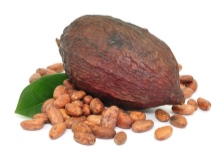
But not only for hair, you can use the beneficial properties of cassia. It is successfully used for the skin of the face and body, as well as for the hands. Well, the tool has proven itself in the following cases:
-
aging skin, wrinkles,
-
increased fat content
-
dryness, in which the product will provide the necessary moisture,
-
with normal skin will provide proper nutrition,
-
dermatological problems, acne, inflammation, pimples.
Masks are used for face and hand care. Henna in them is enriched with various additives. For dry epidermis, oily forms of vitamin A are used, for oily ones, honey with kefir or yogurt. Normal skin may allow the use of aloe juice, yolk or banana. Clay is also successfully used. With increased fat content, white or green is recommended, with dryness - red, and with inflammation - blue or black.

To improve the skin of the body, a bath with cassia powder is made.
How much to keep?
The amount of time you need to leave the cassia powder mask on your hair depends on the desired effect.
Thirty to forty minutes is enough to improve the appearance of curls, giving them softness and a healthy shine. And to solve the problems of hair loss or split ends, the remedy must be kept for at least an hour and a half.
Some sources say that you can leave the composition on your hair even overnight, the more noticeable and brighter the effect of its use will be. But you definitely shouldn’t do this in the first few applications, as well as when using on naturally light or dry strands.

Will the paint stick?
As we have already noted, you should not use colorless henna on dyed, highlighted or previously bleached hair.
But many women are concerned about the question of whether, after a course of medical procedures using cassia powder, it is possible to stain or bleach. Within a few days after applying the last mask for curls, coloring can give an unpredictable effect. Due to the content, albeit a small, coloring matter, the color may turn out to be yellowish or even greenish. The paint can also lie unevenly.
It is recommended to dye curls after the last use of colorless henna at least a week later. Then both the healing effect and the result of staining will not disappoint you.

Reviews
Many modern women prefer natural hair care products, including colorless henna.
The opinions of hairdressers about the use of cassia powder are unanimous. With the right selection of related ingredients, it has an excellent positive effect on curls. It is also noted that this component is present in many professional hair care products, and at home you can use it in its pure form.
Reviews of trichologists are also positive. Doctors advise to follow the course of therapy and not to use the remedy too often. They emphasize that it is not worth using such a product on dyed or bleached hair. You need to be more careful with colorless henna with dryness and brittle hairs.
Girls who use henna to care for curls note the importance of the correct procedure. The composition must be used while still hot and be sure to wrap the head with polyethylene and a towel. You should not remove the film before the end of the session, as you can lose the effect of the sauna. For even greater effectiveness, some blow their heads during the procedure with a hot hairdryer.

Also, ladies note the positive effect of masks with cassia for the skin of the hands, face and body. An excellent result can be achieved when it is combined with other beneficial ingredients.
How to prepare a colorless henna hair mask, see the following video






















